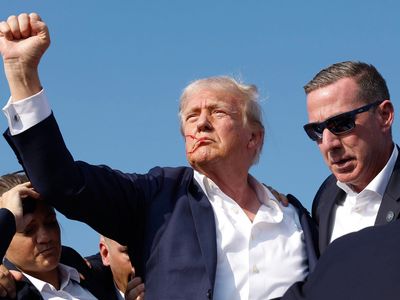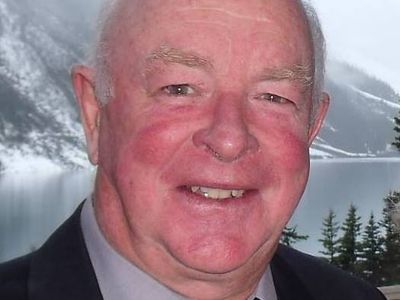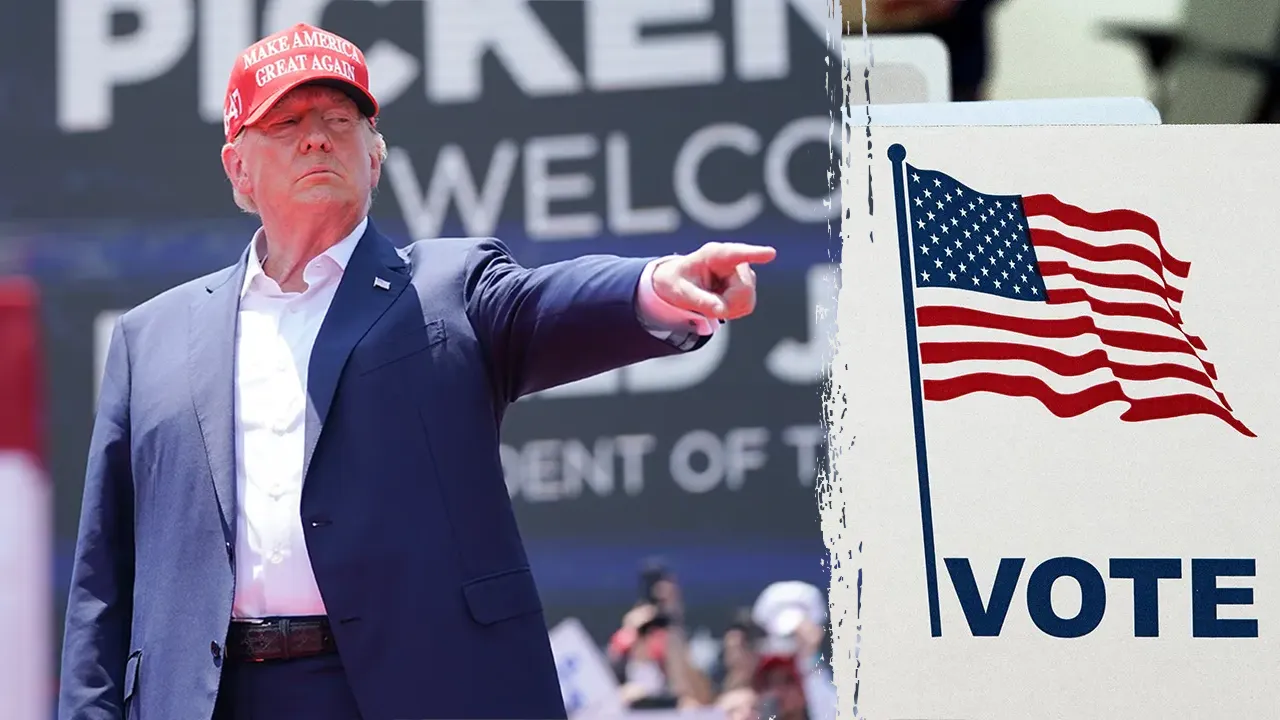White House relocate portrait of Obama to make room for painting capturing Trump's assassination attempt
The White House has substituted a portrait of Obama with a powerful artwork depicting the moment President Trump survived a bullet grazing in an assassination attempt. On July 13 last year, alleged gunman Thomas Matthew Crooks tried to shoot Donald Trump during a rally in Butler, Pennsylvania. The 20-year-old fired eight shots from a firearm on a nearby building's roof, hurting two people and killing one attendee. A bullet also grazed Trump's right ear, as shown in striking photos capturing blood on his face while Secret Service agents protected him. Law enforcement officers killed Crooks at the scene.
Despite the close call that could have been deadly, Trump was seen confidently raising his fist skyward through a cluster of security personnel, his bloodied head held high against a backdrop of blue sky and an American flag—an image that quickly became symbolic for the Republican figure.

Currently, an artistic rendition of this photograph, taken by Associated Press photographer Evan Vucci, has been installed prominently in the Grand Foyer of the East Wing, as confirmed by White House officials.
This notable location typically showcases a painting of the most recent president, though neither Trump nor his predecessor-turned-successor Joe Biden have revealed official portraits since the 44th president, Barack Obama, whose portrait by Robert McCurdy occupied this spot outside the East Room since September 2022.
The new Trump painting, created by Florida artist Mark Lipp, was given to the President by Andrew Pollack, a Republican activist whose daughter died in the 2018 mass shooting at Marjorie Stoneman Douglas High School in Parkland, according to The Independent. Pollack's daughter Meadow, aged 18, was among the 17 students killed in the Florida tragedy.
Meanwhile, the realistic Obama portrait has been relocated to the Entrance Hall of the White House State Floor, where it faces former President Franklin D. Roosevelt's Steinway grand piano.

On Twitter, many users described the new artwork as "epic" and "iconic." One person commented: "This brings a tear to my eye. Some of the greatest art ever made by human hands." Another added: "That image will always be a part of American history."
Many recognized the moment's significance immediately. Nevertheless, some individuals express disapproval of the portrait substitution. Political strategist and Biden supporter Chris Jackson commented on Twitter: "So Trump abandoned tradition, violated protocol, and removed Barack Obama's portrait—simply to display his own. Pure authoritarian leader behavior. Insecure and small-minded until the end." Additional critics labeled the decision as "cringe" and "self-centered."
"I don't believe I've ever encountered someone who loves himself so much," remarked another person. According to The Independent, potential copyright infringement could arise if the photographer hasn't authorized the image's reproduction. The Associated Press has previously pursued legal action against artists over copyright disputes, including a prolonged conflict regarding Shepard Fairey's 'Hope' campaign poster of Obama, which was captured by an AP photographer.
Simultaneously, Trump continues to personalize the White House with his distinctive style, adding gold elements to the Oval Office and adorning the West Wing with New York Post front pages that chronicle his significant political comeback.



